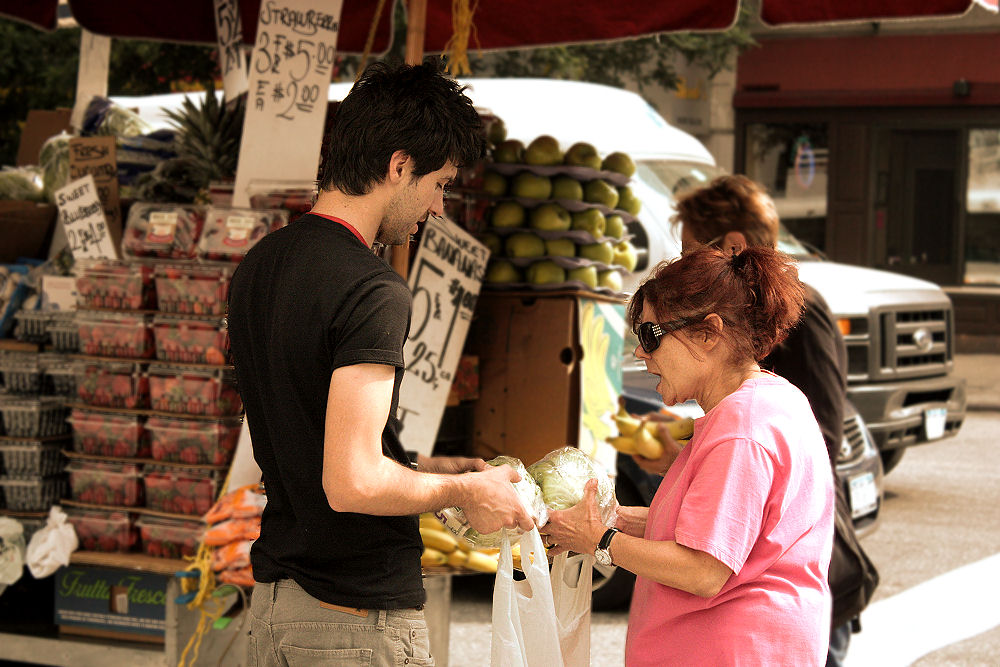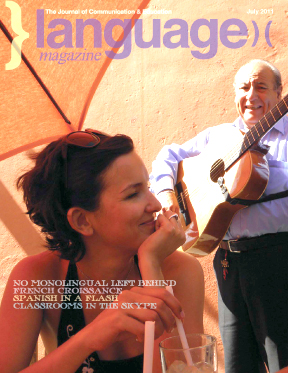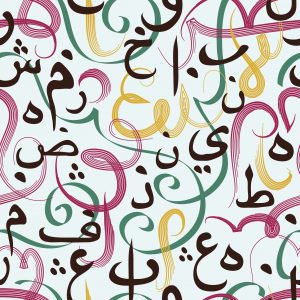 Sandy Saghbini and Raisa Zaidi explain the complex, controversial, and creative impact of technology on Arabic typeface development
Sandy Saghbini and Raisa Zaidi explain the complex, controversial, and creative impact of technology on Arabic typeface development
Arabic Around the World
Over the past two decades, the influence of Arabic language and culture has swiftly spread across the world. Indeed, Arabic is one of the most widely spoken languages on the planet — it is spoken in 23 countries and is the native language of roughly 300 million people. Designer David Learman claims that the Arabic language has not only influenced countries around the world, but has also spread “rapidly across most developed societies.” He goes on to assert that “no matter where you are located — London, Paris, Berlin, or indeed on the other side of the world in the U.S. or Australia — awareness of Islam and Arab cultures is becoming increasingly important from a design and communications perspective.” As design practitioner Halim Choueiry points out, many experts consider globalization’s greatest impact to have been on the Middle East. At the heart of such change is the Arabic language itself.
With the development of communications technology, Arabic designers have worked hard to ensure that their language is included. However, this is only a recent development. For years, Middle Eastern designers and typographers struggled to keep up in a global market largely dominated by Latin-based alphabets. These struggles have plagued the development of Arabic typography throughout history. Indeed, Arabic calligraphers were not initially part of Gutenberg’s movable type innovation of the late 1440s, mainly due to the language’s cursive, non-Latin structure. Renowned typographer Mourad Boutros offers insight to Arabic’s traditional structure and its conflict with the function of the metal press (movable type). To put it simply, the “methods of creating typefaces for printing from metal type were developed specifically for the Latin alphabet,” meaning that languages with other alphabets, such as Arabic, had to conform and make sacrifices in order to use the same process and keep up with the world’s technology.
Difficulties with Movable Type
Such sacrifices often meant total reconstruction of Arabic letterforms. Metal type consisted of blocks of metals that were divided into units,” with the “deciding and dictating factor” for Latin typefaces dealing with the construction of the letterforms to their collective height. In other words, it was ultimately the height of the metal type’s body that determined linear type for Latin alphabets. As Boutros further explains, the majority of Latin fonts are designed “so that each letter is set and spaced apart from its fellows.” Latin fonts can also “be described as being of a vertical construction,” with much emphasis placed on the ascenders and descenders of its letters. Arabic, however, appears to be the complete opposite in its construction, with much emphasis placed on letterforms that are physically linked by a horizontal line within a word. It is precisely Arabic’s more fluid and horizontal form that puts it in such contrast with the more “controlled and inflexible Latin letterforms.” And, to make things even more complicated, the Arabic alphabet’s 28 basic letters each have different forms depending on their position within the word: whether the letter is at the beginning, middle, or end of a word changes its appearance.
In the article “Advances in Arabic Printing,” Walter Tracey, who in 1947 became the manager of typeface development for Linotype, explains that Arabic’s cursive characteristic and the variations in letterforms “made the manual and mechanical typesetting of Arabic a more laborious task than the typesetting of European languages.” In turn, this made it difficult for Arabic-speaking countries to keep up with the technology of movable type and printing. The metal press had initially been created for a vertical, spaced, and less fluid alphabet than Arabic.
The Merging of Western and Arab Worlds
Arabic has managed to become one of the most influential languages in today’s global communications market thanks to the collaborations between Western and Middle Eastern businesses. Halim Choueiry explains that, for the last century, the Middle East has been “importing to the Arab world what has been produced by the West,” which has “resulted in many people growing accustomed to speaking two languages.” The Middle Eastern country of Lebanon is often used as a prime example of this, since most of the population speaks Arabic, English, and French to such an extent that it is normal for them to switch between and integrate Latin words into their everyday conversations. Lebanon is also known as one of the most Westernized countries in the Middle East, where many multinational companies kept their offices during the 1960s. Most creative work in advertising, design, or branding took place in Lebanon’s capital, Beirut, before the onset of war in 1975. With the oil boom of the Middle East, both multinational and local companies wanted to create brand identities that would appeal to Arabic speakers while keeping their Western identity. This resulted in a movement in which Latin letterforms and Arabic letterforms appeared together in logo designs, ultimately bridging the typographies of Western and Arab worlds.
Simplifying the Arabic Alphabet
This collaborative design method proved quite successful in establishing trendy and memorable brand logos for both local and multinational businesses, prompting designers to think of more creative ways for Arabic and Latin alphabets to interact while keeping the original logos’ feel. But such wasn’t new: about 20 years earlier, a Lebanese architect and typographer, Nasri Khattar, created “Unified Arabic,” a simplified printed form of the Arabic alphabet that consisted of 28 detached characters. Unified Arabic “was meant to ease the learning and writing of the script by reducing the number of shapes letters could assume.” Indeed, Khattar’s approach toward simplifying the Arabic alphabet ignited a movement that is still influencing many typographers and designers today.
A key figure in this movement is Boutros, who is best known for the development of “Simplified Arabic Type” in 1993, which revolutionized Arabic’s availability on computers. With his wife, Arlette Boutros, they created truetype fonts that were compatible with Microsoft’s Arabic Windows as well as the Mac OS Arabic Language Kit. The Boutros couple has also designed more than 50 Arabic typefaces, with some available on IBM printers as core fonts. But aside from these accomplishments, Mourad Boutros had followed Nasri Khattar’s lead by designing a detached, non-cursive Arabic font known as “Basic Arabic.” By creating a detached alphabet, Arabic became more compatible and simpler to work with when dealing with Latin-based computer systems, and also became more appealing to non-Arabic speakers and the global-market.
However, merging the Arabic alphabet with Latin alphabets is a complex undertaking. According to Boutros, “Conveying a theme from one language to another is not a simple task, and we should not treat this lightly, given all the cultural connotations that it entitles… Latin and Arabic typographies should interact as if putting two cultures together. Once each shows its own identity then, in the design of the artwork, the typographies will work concurrently.”
Keeping Up with Modern Technology
But why is it so important for the Arabic alphabet to be simplified and merged with Latin alphabets? Boutros explains that the movement to simplify the Arabic alphabet will help solve problems that have made technological advances with typography difficult in the Middle East. For example, the first mobile phones in Arab-speaking countries did not have an Arabic typeface, so mobile phone users would use the Latin alphabet to express Arabic words. However, not all Arabic letters could be matched by a Latin letter, so Latin numerals were used in between the Latin letters in order to properly express the Arabic word. According to Boutros, this created “a hybrid language based on technological limitations that became habit.” Even with today’s availability of the Arabic Mobile Interface, this type of language is still used when texting, emailing, and chatting. Boutros told Language Magazine that his books were meant to address these types of problems.
The dearth of Arabic fonts installed on computers is a result of the fact that only Latin based languages were taken into account at first. Only two Arabic fonts are currently installed in the majority of users’ computers around the world, which means websites created in Arabic stay limited to these fonts so they are readable to most visitors. Therefore, most Arabic websites come across as bland and messy.
One of the most important developments for the improvement of Arabic typeface design came about in the late 20th century, with Letraset’s invention of the dry transfer process. Boutros explains that this process allowed typographers to use “Instant Lettering” sheets to form words and texts by “releasing a letter from a retaining sheet.” Letraset’s development ultimately led to the production of the typeface Tanseek, which took a new approach in developing Arabic for print. Unlike prior Arabic typefaces developed for movable type, Tanseek was developed with Latin being used as a supplementary font. Instead of having the Arabic alphabet depend primarily on supplementing the Latin alphabet, the Latin alphabet was now being used to supplement the Arabic alphabet. Tanseek proved to be highly successful in its bilingual approach, resulting in a harmonious relationship between Latin and Arabic alphabets.
Detached Arabic Alphabet: An Educational Tool
Keeping up with and solving problems concerning technology are not the only good reasons for simplifying the Arabic alphabet. One of the most important reasons revolves around making the language easier to learn for non-Arabic audiences. “Unified Arabic” and “Basic Arabic” are described as typefaces that serve “as educational tools to simplify and accelerate the process of learning to read and write Arabic.” Making Arabic less difficult to learn is the subject of Cultural Connectives, which focuses on Mirsaal, an Arabic font that Abou Rjeily created from scratch to lend a more detailed understanding of harmonizing Arabic and Latin alphabets. The presentation of Mirsaal is creative, visually appealing, and easily understood. Yet, creating a detached Arabic alphabet poses problems as well. Many Arabic speakers have voiced their concerns about a detached alphabet, several believing it to be inappropriately “Westernizing” the language and stripping it of its cultural tradition.
But Abou Rjeily believes otherwise, “Calligraphy and typography have very different purposes and, in my opinion, separating Arabic type from calligraphy is not disrespectful — on the contrary, it assists in the development of the language and leaves room for experimentation.” She also tells Language Magazine that Mirsaal was not created nor meant to be seen as a substitute for the Arabic alphabet. “Mirsaal is a message, a medium that helps simplify a very complicated script. It is not a substitute.”
To get this message across, Abou Rjeily juxtaposes the traditional Arabic alphabet with the Latin alphabet in a way that makes it easy for readers to compare the two, “Instead of totally substituting Arabic with Latin, or using calligraphic Arabic, which has a very complicated shape, I use a detached font to introduce Arabic to non-Arabic speakers.” Mirsaal “maintains the integrity of the Arabic script and letters by only simplifying their representation. Each letter has one shape wherever it stands in a word instead of three or four shapes. This way it’s less difficult to recognize the letters and memorize them.”
Cultural awareness is of great importance when merging of Arabic and Latin alphabets. Large corporations have made huge mistakes when advertising their products in Arabic, sometimes coming off as culturally inappropriate.
Still a Long Journey Ahead
Whether in design, technology, or business, the Arabic language has experienced immense growth in a short period of time. Yet, there are still many obstacles that continue to afflict its growth. If Western developers don’t open up more toward Eastern languages, these problems will continue to persist. In order to gain more support, it is up to Arabic-speaking typographers and developers, like Mourad and Arlette Boutros, Choueiry, Kandalaft, Abou Rjeily and others, to bring forth creative and innovative designs that will revolutionize Arabic’s participation in technology, as well as preserve its cultural tradition and creativity.
References
Abou Rjeily, R., Cultural Connectives Mark Batty Publisher, New York (2011)
Boutros, M., Khouri, A., Learman, D., Choueiry, H., Kandalaft , G., Abi Aad, A., Talking About Arabic; Mark Batty Publisher, New York (2009)
Boutros, M., Arabic for Designers; Mark Batty Publisher (2006)
Krek, M., “The Enigma of the First Arabic Book Printed from Movable Type”
Tracey, W., “Advances in Arabic Printing” British Journal for Middle
Eastern Studies Vol. 2, No. 2 (1975)
Lunde, P., “Arabic and the Art of Printing” Muslimheritage.com
http://muslimheritage.com/topics/default.cfm?articleid=988#ftnref2
Malkawi, L., “Alternative Layouts for the Arabic Keyboard: Optimizing
Usability, Speed, Comfort, Accuracy, and Learning Curve” (2002)
IBM Office Products Division, “Typewriter: An Informal History” (1977)
http://www-03.ibm.com/ibm/history/exhibits/modelb/modelb_informal.html
Sandy Saghbini is currently a student at the University of California, Irvine pursuing a BA in English with minors in psychology and educational studies in preparation for graduate schooling in school psychology.
Raisa Zaidi holds a BA from UCLA in political science, minoring in public affairs and Middle East North Africa studies. She has written for the Daily Star Lebanon, and attends Columbia University Graduate School of Journalism.


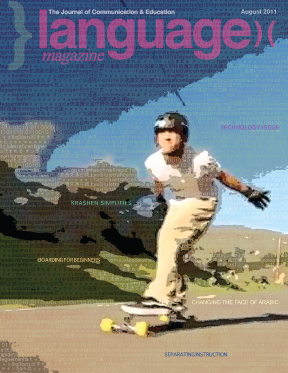

 With the increasing consumption of Japanese cultural products in the United States, and especially with the proliferation of manga and anime, Japanese has become a popular alternative to the traditional canon of commonly taught foreign languages. Most colleges and universities and even some high schools now host study abroad or exchange programs with sister schools in Japan.
With the increasing consumption of Japanese cultural products in the United States, and especially with the proliferation of manga and anime, Japanese has become a popular alternative to the traditional canon of commonly taught foreign languages. Most colleges and universities and even some high schools now host study abroad or exchange programs with sister schools in Japan.
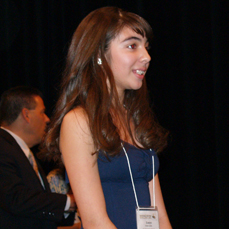
 Italian Language Foundation Announces Dante Award for Excellence in AP Italian Language Studies
Italian Language Foundation Announces Dante Award for Excellence in AP Italian Language Studies